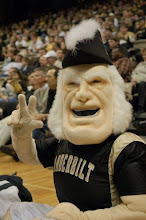Our friends at The College Baseball Blog alerted me to an interesting story in today's Dallas Morning News that sheds light on the scarcity of Division I scholarships:
The NCAA considers revenue sports football and basketball "head-count" sports, meaning all the scholarships awarded in those sports are full – typically room, board, tuition, fees, books and meals. On the women's side, basketball, gymnastics, tennis and volleyball fall into that category.
The rest of the sports offered by universities are considered "equivalency" sports and can divide scholarships. The minimum amount of aid that can be awarded is 25 percent, meaning a student-athlete might receive books and meals but nothing else.
"Even for the parents of top players, they are still going to have to participate financially and participate in a fairly significant way," said Texas baseball coach Augie Garrido, who has won five national titles and more games than any other baseball coach in Division I history.
Having to divvy up the financial aid puts coaches in a precarious position.
For baseball coaches like Vanderbilt's Tim Corbin, it just got even harder.
Beginning this fall, the NCAA will adopt stricter scholarship and transfer rules in order to eliminate "tryout scholarships" and drive up player retention, according to Brian Davis of the Dallas Morning News.
Roster size limits will be put in place (no more than 35) and teams must now give 30 players at least 25 percent of a full scholarship. Beginning in 2009-10, that number will drop to 27. Keep in mind that baseball programs have just 11.7 scholarships available to begin with. Also, players will now be required to sit out one year if they transfer to another NCAA school.
The rule changes were enacted "to help improve grades in in a sport long criticized as having some of the worst GPAs in college sports," Davis writes.
Still, many coaches are opposed, most notably former Mississippi State coach Ron Polk, who wrote a passionate 18-page letter describing how this rule, along with others, was ruining the game. Here are a few Polk's major points:
1. College baseball gives out the smallest number of scholarships based on the average roster size of each sport, both men and women. It has just 11.7 scholarships to spread among a team with 35+ players.
2. College baseball is now the only sport that will have a roster cap placed on teams' coaches and players.
3. College baseball is now the only "equivalency" sport that is required to provide a minimum scholarship (25%) and determine the number of players who can receive scholarships (30).
Texas A&M coach Rob Childress can list several players he's coached who came to school on less than 25-percent scholarships. Take A&M sophomore right-hander Travis Starling, for example.
Starling redshirted in 2006 and appeared in 15 games in 2007. Last season, Starling was 8-2 with a 3.70 ERA for the Big 12 champion Aggies.
"The stories you've heard about the Travis Starlings of the world, that's going to be a thing of the past and that's sad," Childress said.
4. College baseball is now the only "equivalency" sport that will have a no-transfer rule. All other "equivalency" sports allow student-athletes to transfer one time without being forced to sit out a year.
Here's one example that should help illustrate why these changes are problematic:
Say, for instance, that Vanderbilt coach Tim Corbin has 24 underclassmen in his program. Of those 24, he thinks four will be drafted in June's MLB Draft, which would leave him with 20 returning players.
Therefore, he offers seven recruits a partial scholarship. Then, the four players he thought he would lose in the draft decide to return to school for their senior seasons. And since all the recruits decide to enroll, Corbin is left with 31 players, although just 27 are allowed to be on scholarship.
Now, what does Corbin do? Four of those players will either have to become one of the eight alloted walk-ons (since the roster cap is 35) or transfer to another school, where they'll have to sit out a year before being eligible to play.
As Polk put it, "The coach who does not care about student welfare will always have to go over his number in the recruiting process, for the only way he can ever hit the magic number 27 on the button is by protecting himself and his baseball program by signing more players in hopes that he somehow can work himself down to 27 players on scholarship. The caring coach interested in student-athlete welfare could be facing situations every year where he has well below the 27 scholarship players, for he refused to gamble with a student's welfare. Who is going to win more baseball games? The answer is very easy: the uncaring coach."
I'm going to get Corbin's thoughts on the rule changes when I return to campus in a couple of weeks, but I think I know where he stands, and that's right next to Ron Polk.





2 comments:
You can expect more idiocy from the NCAA with Myles Brand at the helm. He is a known hater of big time college sports.
what about the kid who gives up a deceit scholorship close to home to be told by another school walk with us we will get you the money once we make cuts. and the money never comes at 52ooo.00 a year this kid is forced in to a junior college and can not transfer to play ball until he graduates from junior college why are we punishinh this kid. also he can not file a waiver on behalf of himself he has to have a school to do this come on people we are hurting these kids when tell them false things to recruit
Post a Comment